meet isabel
Hi and welcome to my blog! my name is Isabel and I specialize in sweet baby and family portraits. Sessions take place in the comfort of your own home or family location.
Follow me as I share my favorite images of cuties that will brighten your day and make you smile. They are only this small once!
If you would like more information on portrait sessions, click on the "contact" tab so we can connect. I look forward to hearing from you!
SEARCH
BLOG CATEGORIES
Babies/Children
Families
How To
Maternity
Newborns
Tips on introducing your newborn to your dog
As a mother of two boys and two dogs, I love my little furbabies as much as my boys… we’re all a pack! Kiddos and pups do become the best of friends but it does take some work and preparation to ensure a smooth transition. After all, pups are usually “our first babies” and it’s a dramatic change in dynamics when we welcome new members into our family. There are many factors to consider while keeping the baby’s safety as the top priority. Below are tips on introducing your newborn baby to your dog. These tips will keep all babies (furry or human) happy and healthy as they transition into siblinghood. If you have any tips that have helped you out, comment below and I’ll include them in a future post.
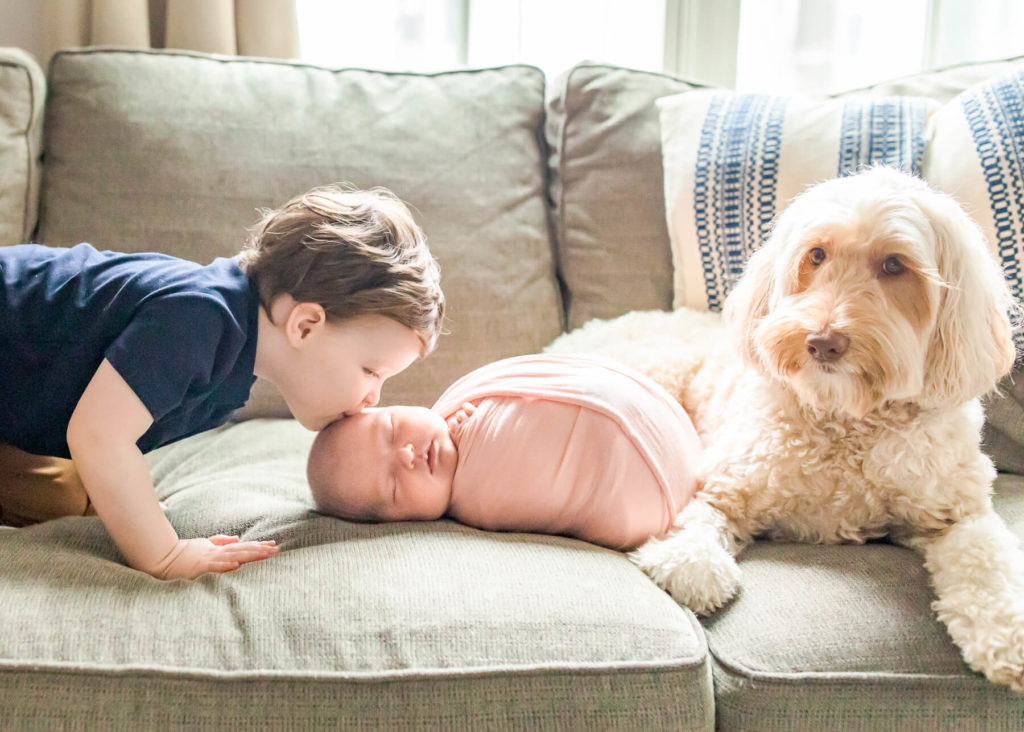
1. Teach your dog old tricks
Before your baby is born, it’s a great time to brush up on some old tricks in order to help your dog to control its impulses. Retraining your dog to follow some basic commands such as sit, down, stay, and wait will sharpen their awareness and obedience skills. This will definitely be helpful in keeping your newborn safe when the siblings are first introduced. Other important commands include no jumping, no barking, or drop it. These commands help when holding your baby or if your pup wants to play with any of the baby’s toys. You may also want to reconsider crate training your pet before the arrival of your newborn. The crate can be a great, secure spot for your dog when you need to put your baby down and can’t keep your eyes on your pup.

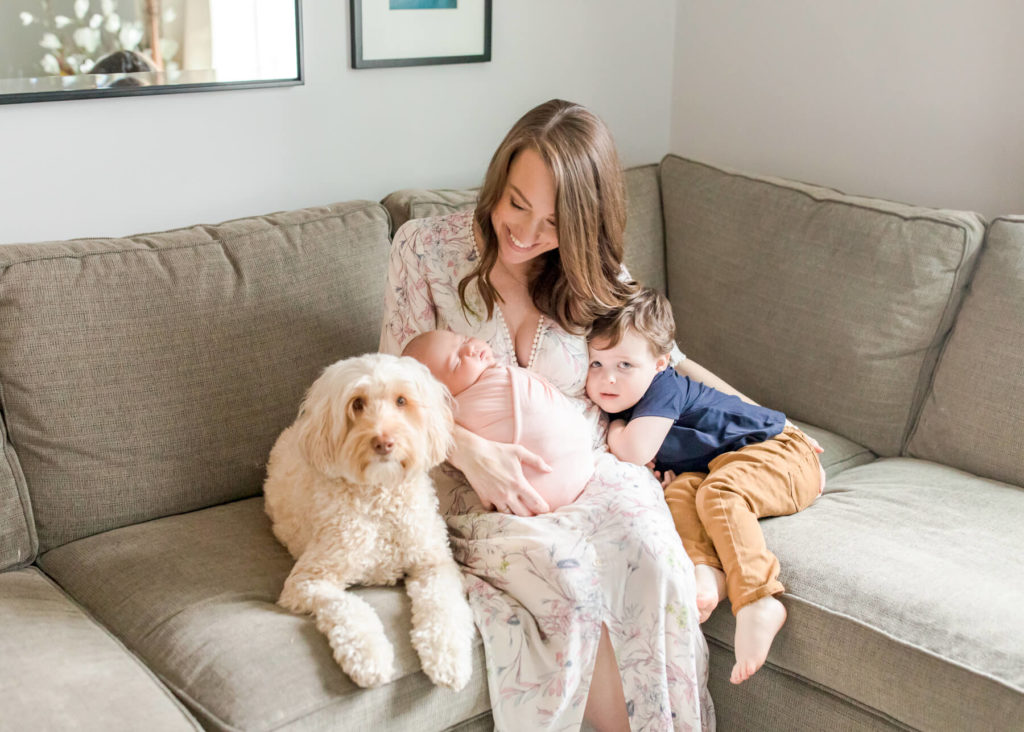
2. New house rules
Implementing new house rules with my dogs is the toughest part for me, especially with stubborn little French bulldogs. It’s best to set these rules earlier than later and to remain consistent before and after the baby’s welcome. As difficult as it is to change house rules, keep in mind that the safety of your baby is the main priority. One rule may include no longer allowing your dog to sleep with you as it’s likely you’ll spend a lot of exhausting nights in bed with your newborn. Another rule is no longer allowing your dog on the furniture as this prevents your baby from being harmed or startled if your dog has a tendency to abruptly jump onto the couch. Also, set up some “off-limit zones.” Dog whisperer, Ceasar Milan, recommends the nursery being off-limits. This will convey to your dog that the room belongs to a pack leader and must always be respected. Doggy gates can be helpful these creating off-limit zones. Remember that every family is different, so set house rules that work for you.
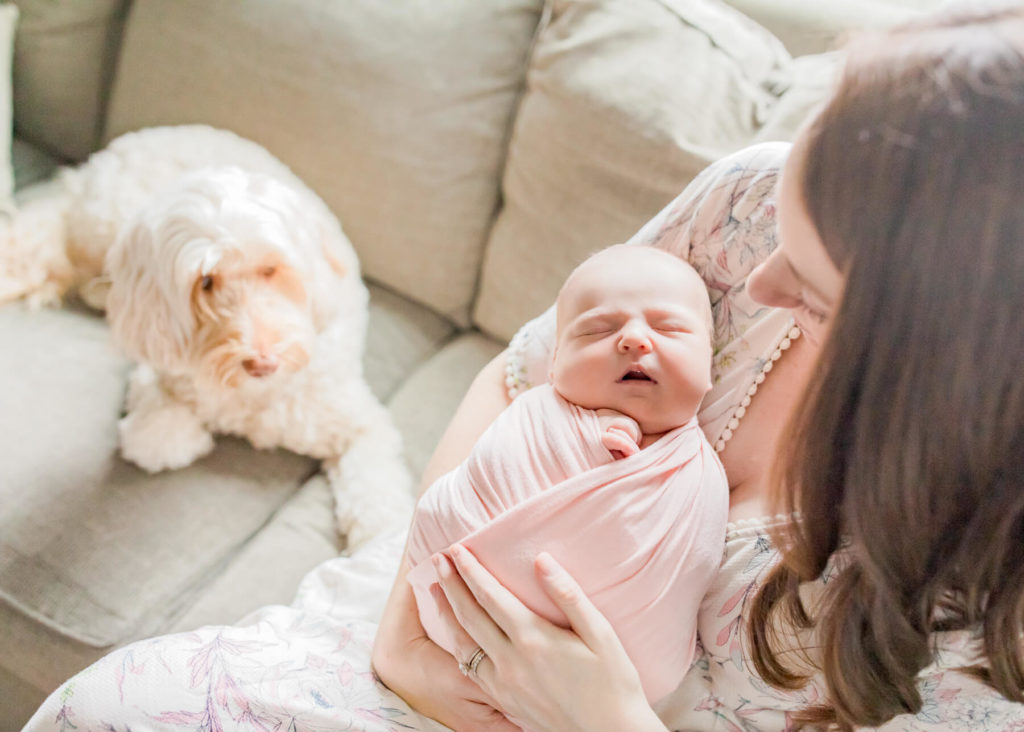
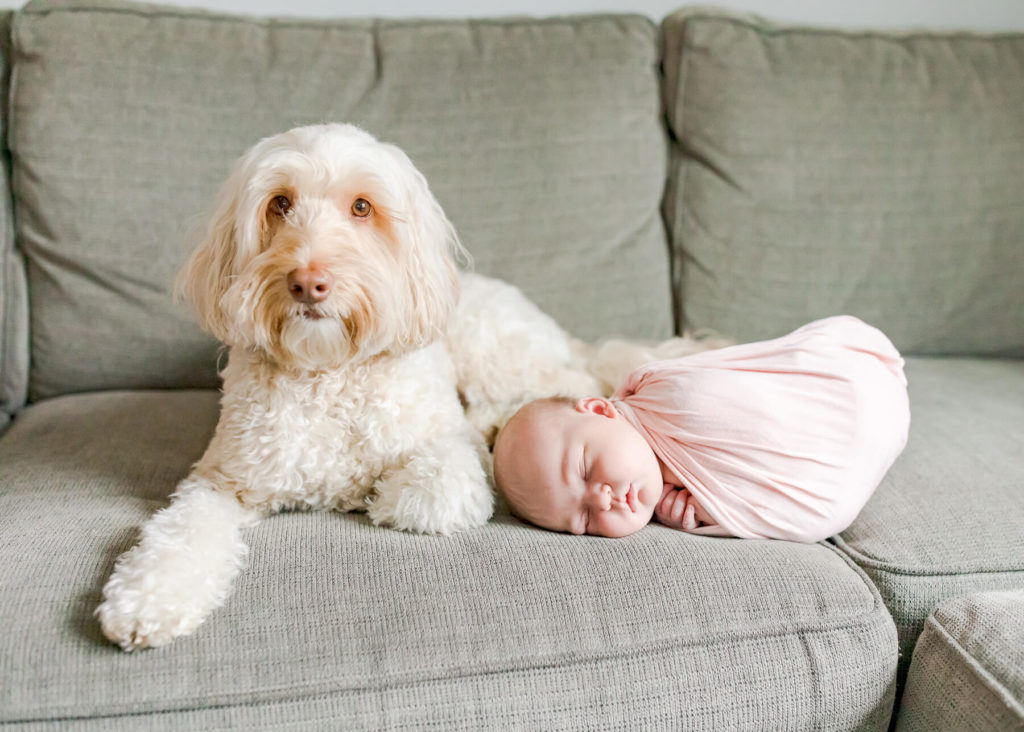
3. Get a test doll!
Trust me, I got a chuckle from this too but it does make sense, especially if you have an anxious pet. Some experts suggest getting a crying and moving doll as a training doll. This would help your dog adjust to new sounds and movements. You can practice placing your doll in the crib, walking around with the doll in hand, or going for a walk with a stroller so your pup becomes familiar with the movements. You too can learn by watching the way your dog reacts. Remember to reinforce their good behavior and to start creating a routine.
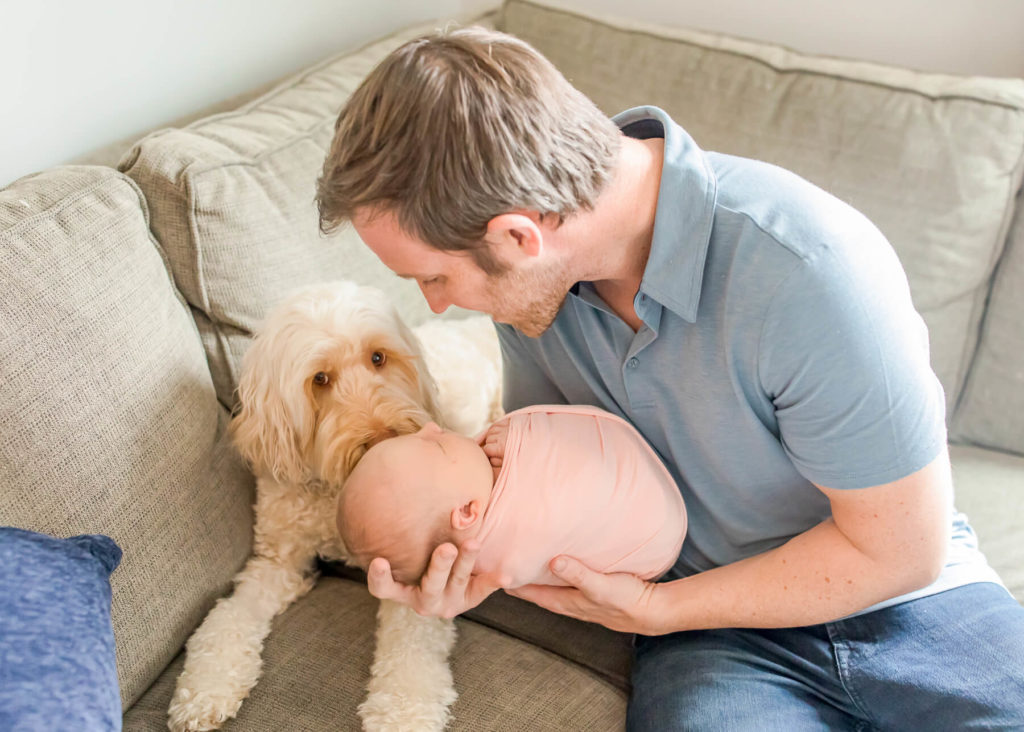
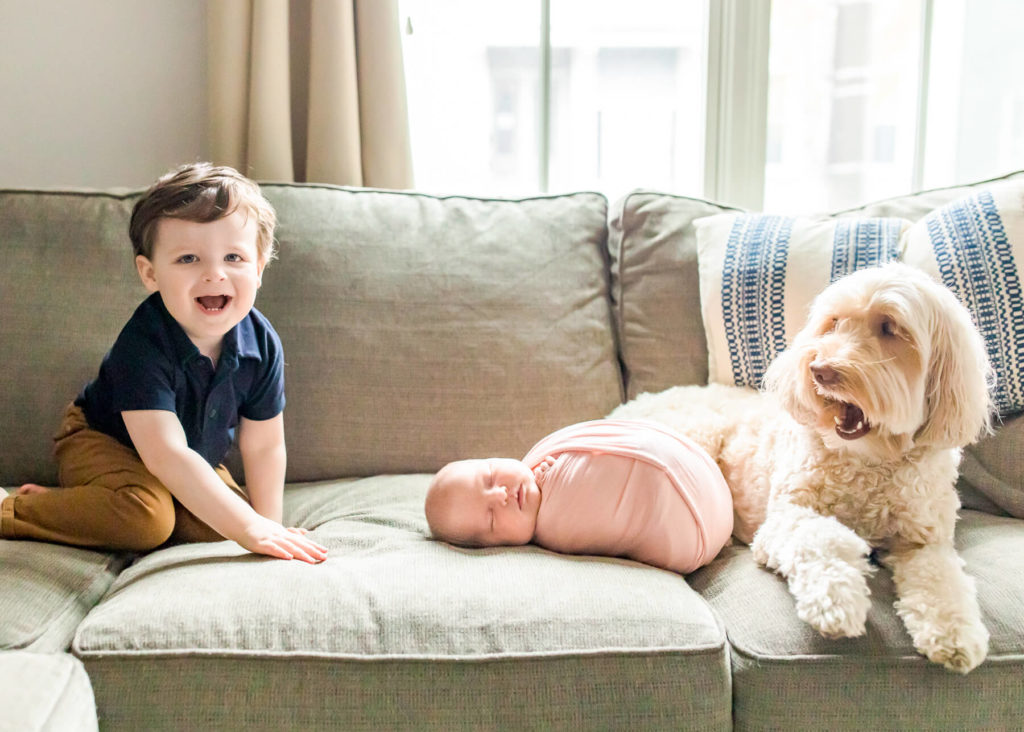
4. Switch your schedule up
Dogs are happy when they have a set routine. A few weeks before the baby is born, it’s crucial to incorporate a new routine so your dog has a smooth transition. Try to anticipate what your schedule will look like once the baby has arrived and slowly help your dog get used to the new routine. Keep in mind what time of day you’ll have someone helping you or when your spouse/partner will be home. Setting your dog’s future daily expectations may include delaying their morning walk to the afternoon or changing your dog’s eating window to when both parents are at home. Switching up your schedule can even include hiring a new dog walker (so worth it!) a couple of weeks before the baby is born.
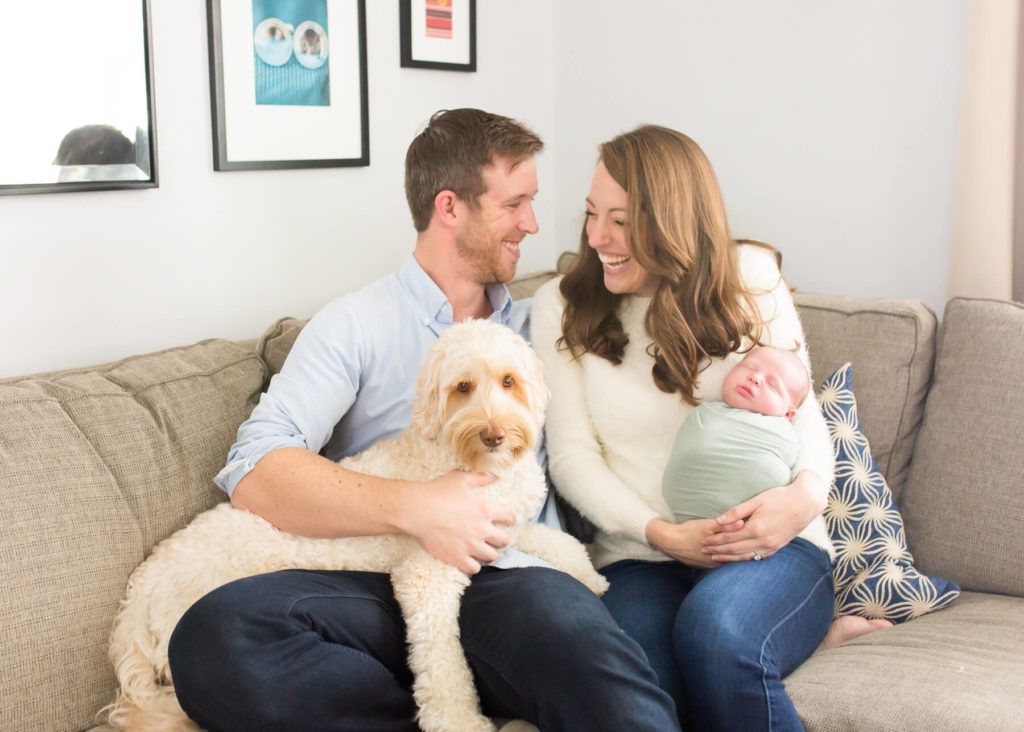
5. The introduction: the babies meet
If feasible, introduce your pup to your baby’s smell by letting them explore the baby’s clothing/burp cloth before the little one is home from the hospital. Before entering your home with your newborn, remember that dogs sense feelings so walk in with a relaxed and calm mood. Have someone help you with the interaction by having them handle your leashed dog. Try to have your dog meet your baby in a room free of loud noises or distractions. You can sit with your baby and let your dog (while being handled with a leash on) slowly meet the baby. Talk to your dog in a loving voice as you let your pup slowly sniff your baby’s feet and “praise them” for their calm behavior. DO NOT force your dog on the baby and let your pup gradually get used to the new member of the family. Depending on your dog’s temperament, it may take a few meetings. If you find that your dog is too aggressive or you don’t feel comfortable with their behavior, it’s time to seek the help of a professional dog trainer.
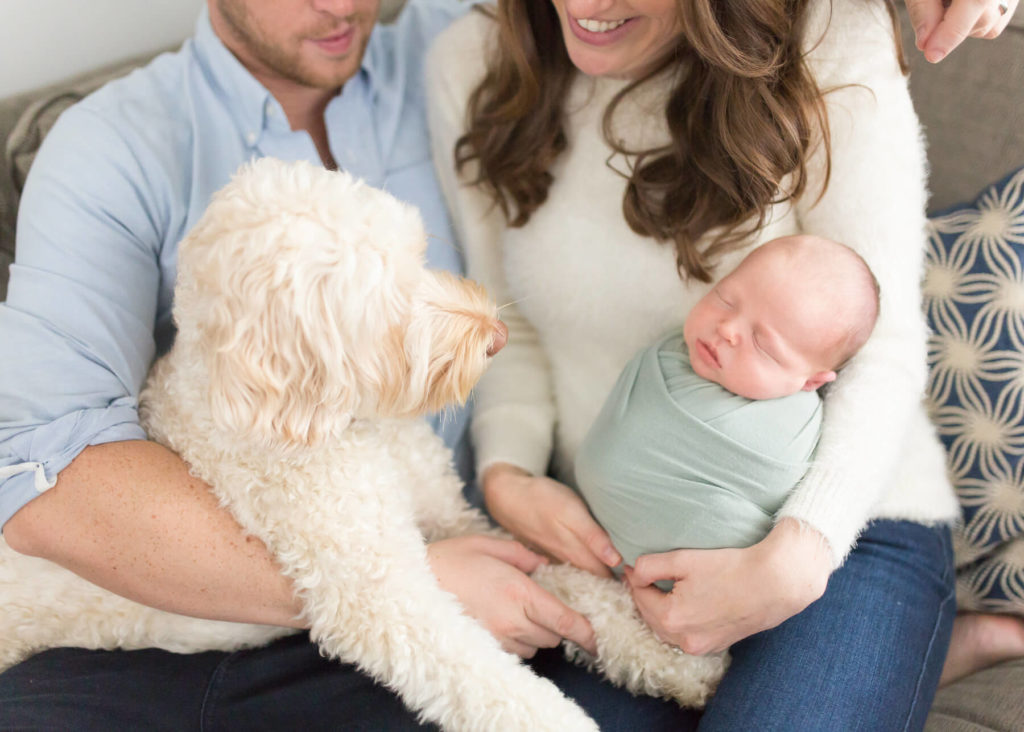
6. Show them love
The arrival of a newborn can be exciting and it affects everyone in the family. This includes pups. Neglecting your pet may result in some negative attention-seeking behaviors. Don’t forget to give your dog some attention and try to include them in your daily routines. More importantly, providing them with daily walks and a consistent routine will help your dog feel relaxed and secure with the new changes in the home. With patience and consistency, your heart will warm as you watch your littles slowly become besties!

Love these tips? They were inspired by this article on CanineJournal.com.
FOLLOW ME ON INSTAGRAM!
If you LOVE babies and want your baby fix, follow me on Instagram! I look forward to seeing you there.
South Boston Ma newborn family photos by Isabel Sweet
I am a baby and newborn photographer in the Boston area. I am happy to provide boutique photography services to the South End, Back Bay, Fenway, Brookline, Cambridge, South Boston, Belmont, Arlington, Lexington, Needham, Beacon Hill, Newton, and beyond! All sessions take place in the comfort of your own home or favorite location. This in-home photo session took place in South Boston, Massachusetts. Interested in a newborn baby session? Contact me now!